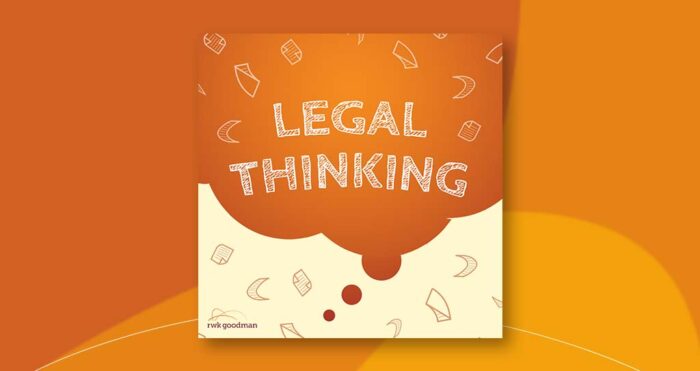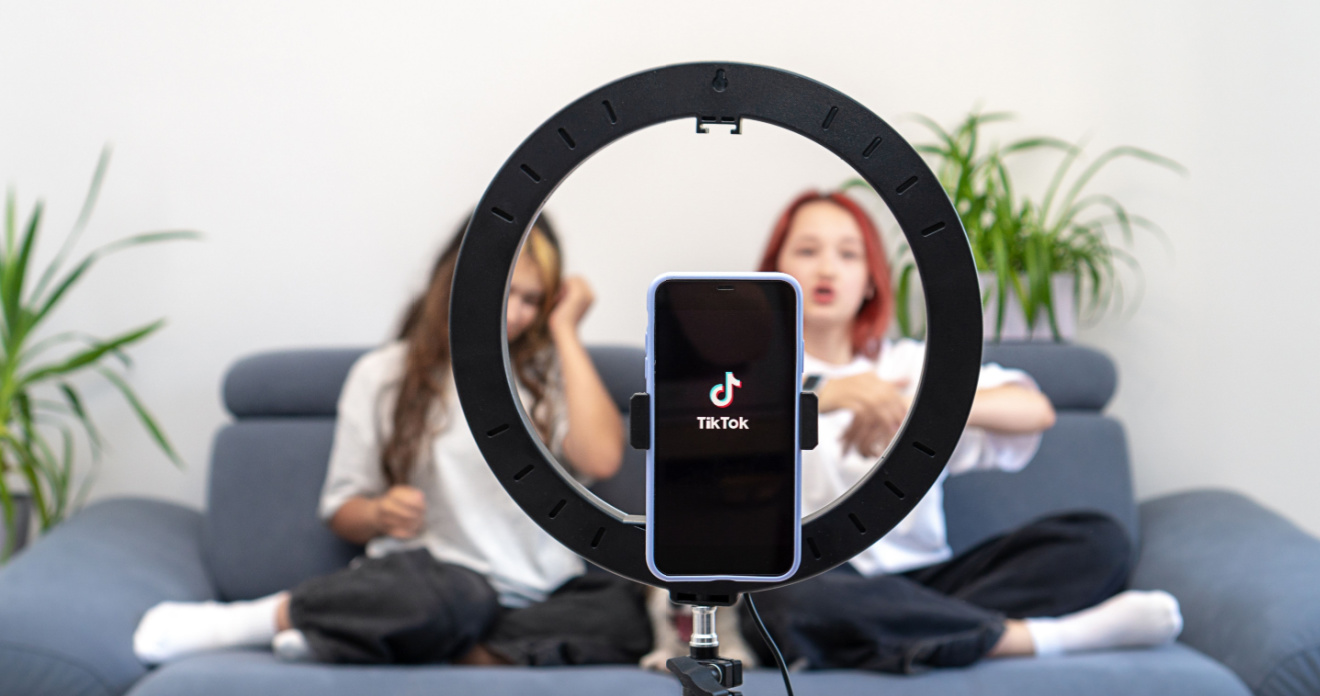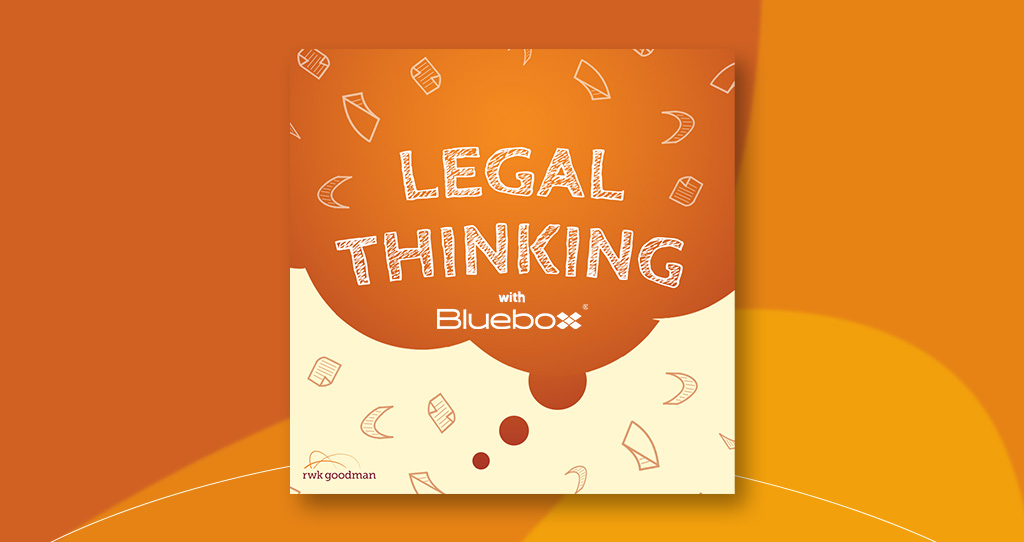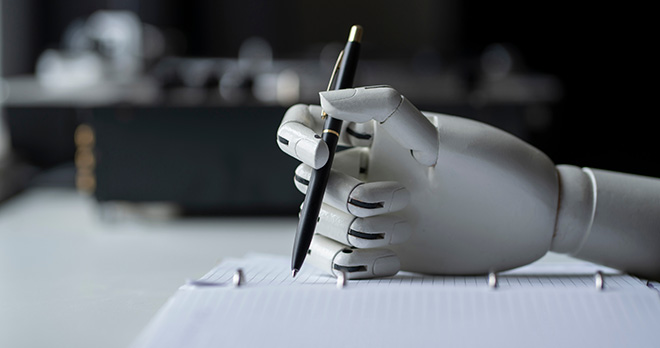Intellectual Property: Unregistered design rights and copyright | Legal Thinking Podcast
You can also listen to our podcast on your podcast platform of choice - find it here >
In this bonus episode, we welcomed Charley Ebbutt and Stephen Welfare back onto the show to delve further into IP disputes; specifically in relation to unregistered design rights and copyright.
So let's start off with a bit of a recap of what we covered in the first podcast that we did a few months ago about intellectual property and intellectual property rights. Charley if you want to give us a little bit of a recap and remind us what a registered design is?
Charley Ebbutt: Yeah so we spoke about this last time but just to sort of recap for everyone, a registered design can protect three dimensional and some two dimensional designs and it includes sort of surface decoration and aesthetic types of design, and it gives a 25 year monopoly right to use that design.
Lovely stuff and for more information about registered design you can go back in our back catalogue of episodes and find the episodes about that, we'll also make sure that that is linked in the show notes.
So moving on to new territory, unregistered design rights. Stephen do you want to briefly explain what they are?
Stephen Welfare: Yeah so you know unregistered design rights are the rights that exist in industrial designs where the registration… where the design hasn’t been registered. So it arises by operation of law where an object or a design is created, so the moment that it comes into being, the design right automatically arises. We'll talk about copywriting in a minute, and you'll see the similarities there. The restriction in design right is that it exists in the novel, so novel being new (original), aspects of shape and configuration and it doesn't include surface decoration
Okay so we're talking in pretty kind of vague terms at the moment. Can you give us an example of an unregistered design right or what it could be. Do you have any cases perhaps?
Stephen Welfare: Yeah sure a case that I had conduct of and it literally ended up in the Court of Appeal on appeal was to do with trolley cases. So what was the dispute there? It was whether the combination of plastic piping or rubber, rubber piping and zipper was new and you see this in expandable trolley cases, in particular the polycarbonate ones and it was said by our opponent that the particular arrangement of zipper and piping was original, that it was a new design and that my client had copied and the argument we had was that no this wasn't a matter of design, it wasn't a new matter of design but in fact was necessary as a part of the construction, and (as Charley will perhaps confirm later) that there are certain exclusions to unregistered design rights; methods and principles of construction and another being must fit and must match. So is the shape and configuration of that element of the design entirely new and the result of design, or is it dictated that way by it's method of operation and/or construction? And as I said the case ended up in the Court of Appeal and the Court of Appeal in that case held that the arrangement of a piping and zipper was new, that it was possible to create solid cases having a different configuration and therefore the particular arrangement that was found in the claimant's trolley case was new and therefore unregistered design rights subsisted in that design.
Interesting. So is a design right the same as copyright? Charley do you wanna maybe pick this one up?
Charley Ebbutt: Yeah I can do Liam, I was just going to go back to what Stephen was saying there about unregistered designs and perhaps an easy way for people to understand the difference between an unregistered design and a registered design at the very highest level [laughs] is that unregistered designs really only apply to sort of purely functional products, so like Stephen was talking about there potentially a suitcase or a trolley case or other functional products like that, would generally be protected under… as unregistered design so long as they met the relevant requirements. Whereas what we might consider to be more design led products that perhaps have decoration or other ornamental features, are more likely to be registered, protected as registered designs.
So that was just a point on that and then as Stephen was saying there are various exceptions to protection as an unregistered design, and as he was saying that includes if the design is a commonplace design then you wouldn’t be able to claim unregistered design right; or if it contains what's known as 'must fit' or 'must match' features, i.e. it has to be made in a certain way in order to carry out its function then it wouldn't qualify for protection.
Got it. So Charley is a design right the same as copyright?
Charley Ebbutt: No, Liam, it's not [laughs]. There is quite a lot of overlap and I'm sure Stephen will be able to talk in more detail about the various different aspects of copyright but it's not the same, albeit there may well be some products or some designs that may well be able to claim protection under both types of rights for various different features of the relevant product or the design.
Okay Stephen, we'll come over to you. Can you explain the differences and essentially what is copyright?
Stephen Welfare: Yeah sure I'll give it a go.
The best way perhaps to deal with these sort of things is to define the nature of copyright itself but as I think Charley summarised the position on unregistered design rights so that's that but what is copyright and what is the nature of copyright? And you will find that in the Copyright Designs and Patents Act 1988 and what the Act does is it sets out in the opening sections 3 to 8 I think, what the different copyrights are and they are: literary works which hopefully is self-explanatory, dramatic works, musical works, artistic works and there's some to do with broadcasts and so on. Literary Works are obviously novels, you know writings will be covered by that. Dramatic Works again perhaps these are obvious, you know plays, films and the like. Musical Works, anything musical is again self-explanatory.
The one that perhaps isn't obvious and causes most or certainly a lot of confusion and uncertainty are Artistic Works; and where we find artistic works most commonly claimed is in respect of works of artistic craftmanship, and so there the design has to have an element of artistry in it although the bar is quite low because what is a work of art to one man is not necessarily a work of art to another and it can be subjective.
So it must have some … an aesthetic quality to it and also, and this is perhaps a more crucial point, it must also have been created, made by a skilled craftsman and a case which perhaps demonstrates… a case again one of mine, a case that I handled way back in 2001 – I'm showing my age – of Cotton Productions v Boncrest. In that case my client was the claimant in that case and had made, was the creator and manufacturer of patchwork based bedspreads and cushion covers and we claimed copyright, we alleged that the defendant had copied our product which they clearly had but the issue was well that's alright but what rights did we have and could we claim copyright; and the Court, I'm pleased to report, the High Court held that copyright may subsist in those patterns or drawings even if not necessarily in the product from which they were then made, provided that there was sufficient distinctiveness in the appearance which there was, and therefore the work qualified as a work of artistic craftsmanship because it was made by a qualified skilled seamstress so there you have an example of an item which had an artistic element to it and was created by a skilled crafts person and then reproduced and sold in its material form and therefore copyright did subsist as a matter of law and when it was copied that amounted to an infringement of that copyright.
So copyright seems to be strongly linked to artistic craftsmanship. I just wanna see how far this kind of extends. Could you copyright a dance for example?
Stephen Welfare: Well I'm glad you mentioned that because it's… that's a common misconception that something is copyrightable and well that's alright it's a common mistake and it suggests that you've got something and then you go away and copyright it which to my… is… implies some sort of registration. Copyright is not registerable at least not in our country it isn't so again like unregistered design right it arises automatically by operation of law when something within which copyright subsists is created. So you don't copyright it, copyright subsists in it the moment it is created if all the legal requirements are met.
So how do things like 'fair use' exist in the UK?
Stephen Welfare: Well we don’t really have that and that's something I think that you'd find more in the States and other jurisdictions, but not here. We do have Fair Dealing. If copyright subsists in an item, an article, ‘a work’ and the Act talks about works, whether it's something you've written, whether it's something you've performed or it's an item that you've made, collectively they are all works and copyright subsists in that work and you would require the license, permission or consent of the copyright owner in order to use or reproduce it. If you do not have that permission, that license, then that's a breach. There are some very restricted exceptions which one might say analogous to fair use and that is where in certain circumstances the act by the third party does not amount to an actionable infringement because it is a permitted exception and an example of that would be honest use for private study for example. So, for educational purposes. Another one might be for example for purposes of critique for factual reporting where one might mention or reproduce an extract of the work for those purposes, you know those are examples of permitted exceptions.
Having talked about and identified what copyright is, I'm aware of how it might subsist in various works. The next issue is how long does it last and that's an important point because it is, it does enjoy a very long life, certainly compared to the very limited periods of possession you see with patents which you've talked about in previous podcasts of 20 years and as Charley's just mentioned there, 25 years for registered designs if renewed, and only 10 years from the date of manufacturer or I should say from the first date of marketing of an item in design right. Copyright lasts for the life of the creator plus a further 70 years. Previously that had been a restrictive 25 years in respect of works of artistic craftsmanship which had been marketed and manufactured and sold; but that's been removed and so universally now copyright will last for the life of the creator plus 70 years which is a long time and it can cause problems.
People assume that oh it's very old, it's been around for a long time, I'm afraid to use it but that may not be the case for reasons I've just said; and an obvious example of where we see a lot of this is on the internet and on the internet you will see any number of, in particular, images and other drawings and works but let's focus on photographs and images which you'll see on the internet and they have been there for some time and well known and so people think well that's fine, I can use that, it must be open sourced, it's pretty available, I'll download that and use it for whatever their purposes are; and then down the line several months later, it may be years later, they get a cease and desist letter from lawyers or trade mark attorneys accusing the user of corporate right infringement and demanding damages which can be a bit of a shock. I think Charley you've had a recent one like that?
Charley Ebbutt: Yeah so it's a really common misconception that people have that you know they think they can just use an image because it's on the internet, put it on their own website or use it for their own marketing material and as Stephen has said that's not the case, and you know with the rise of the internet and technology there's you know a growing number of companies out there that essentially trawl the internet for images that belong to their clients and their clients are the ones that own the copyright in those images; and what you'll find if you have taken an image and put it on your website and you don’t either own the copyright in that image, or you don’t have a valid licence to use that image, that you may well receive a letter as Stephen has said asking you to pay what they have essentially calculated as what the licence fee would have been for your use of that image. Some of those figures are more realistic and reasonable than others and sometimes that fee is hugely inflated and you know it's never pleasant to receive that type of letter or demand, so we would you know really strongly advise people not to take images from the internet, always use you know a reputable source for those types of images and purchase the relevant licence depending on how you're planning to use it.
So how high can damages be?
Stephen Welfare: The amounts demanded can be quite high. Charley's absolutely right that it should be restricted to what would be a reasonable and fair licence had the user of the image sought permission at the outset; and then they are obliged to retrospectively pay that licence fee and meet the costs of the rights holder, but where the use is flagrant, where there has been a flagrant breach of copyright the infringer knew or had very good reason to believe… to know… that the work was covered by copyright and yet notwithstanding that they took perhaps a wholesale sweep of images or you know made very wide scale use of those images and knowing it was subject to somebody else's copyright with no intention of paying for a licence, then in those circumstances the Court can award what we call additional damages and following a case a few years ago, Absolute Lofts v Artisan Home [2015] the Court can multiply four, fivefold the level of damages so if the licence fee might have been £1,000, then that can be multiplied by 400% in respect of flagrant breaches so it can be quite expensive so it's appropriate to ram home the point that before taking any imagery from the website do make these enquiries and check to see if it's subject to copyright and if so ensure that you have either permission of the rights holder or you fall into one of the categories of exceptions, i.e. you know educational use, and so forth.
Charley Ebbutt: And I think just to add on that and flipping it round to look at it from the perspective of the rights holders themselves, that's why it's really important to you know clearly signal on your work that it is subject to copyright so you know whether that's putting a notice on it. You often see the little c in the circle, or putting a watermark on your images or any other form of notification so that your putting others on notice that the work is protected and therefore you stand a better chance of proving that your work has been infringed.
Stephen Welfare: Yes that's absolutely right and not only is that clearly sensible in order to protect your rights but necessary in terms of infringement because it's worth bearing in mind that copyright means what it says on the tin. It's a right not to be copied you know, the creator, the owner of the copyright has the exclusive right to copy their work and if anybody else wants to copy their work well then they need licensed permission, but note that there is a thing called innocent infringement so you are only liable for copyright infringement from the moment when you knew or you had good reason to believe. So wilfully sticking your head in the sand won't help you, but otherwise in the ordinary course of things, you would only be liable for copyright infringement from the date that you're fix with knowledge or deemed to be fixed with knowledge that the work is subject to copyright so the rights holder should, as Charley quite rightly said, on a practical level use watermarks and so forth otherwise howsoever mark you work as a copyright work ideally with a date but most importantly stating that it's subject to copyright, and then you're ticking the box and fixing opponent with knowledge.
Charley and Stephen thank you very much for joining us.
An additional note on Brexit - how does it affect unregistered design rights?
Following the UK’s departure from the European Union it was necessary for the UK government to create a new unregistered design right.
Previously the Community Unregistered Design right applied granting protection to designs made available to the public. Design covered the appearance of the whole or a part of a product resulting from features of the lines, contours, colours, shape, texture and/or materials of the product itself, provided its new and has individual character. The right is only available to EC member countries, so the UK government created the Supplementary Unregistered Design Right. It is wider than Design Right but has a limited duration of only 3 years.

Subscribe to Legal Thinking
Want to hear more from our podcast?
Find out where you can subscribe and check our our back catalogue right here on our website.








